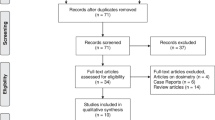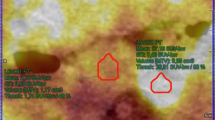Abstract
Pancreatic malignancies, the fourth leading cause of cancer deaths, have an aggressive behavior with poor prognosis, resulting in a 5-year survival rate of only 4%. It is typically a silent malignancy until patients develop metastatic disease. Targeted radionuclide therapies of cancer such as radiolabeled peptides, which bind to the receptors overexpressed by cancer cells and radiolabeled antibodies to tumor-specific antigens provide a viable alternative to chemotherapy and external beam radiation of metastatic cancers. Multiple clinical trials of targeted radionuclide therapy of pancreatic cancer have been performed in the last decade and demonstrated safety and potential efficacy of radionuclide therapy for treatment of this formidable disease. Although a lot of progress has been made in treatment of pancreatic neuroendocrine tumors with radiolabeled 90Y and 177Lu somatostatin peptide analogs, pancreatic adenocarcinomas remain a major challenge. Novel approaches such as peptides and antibodies radiolabeled with alpha emitters, pre-targeting, bispecific antibodies and biological therapy based on the radioactive tumorlytic bacteria might offer a potential breakthrough in treatment of pancreatic adenocarcinomas.
This is a preview of subscription content, access via your institution
Access options
Subscribe to this journal
Receive 12 print issues and online access
$259.00 per year
only $21.58 per issue
Buy this article
- Purchase on Springer Link
- Instant access to full article PDF
Prices may be subject to local taxes which are calculated during checkout
Similar content being viewed by others
References
Rhim AD, Mirek ET, Aiello NM, Maitra A, Bailey JM, McAllister F et al. EMT and dissemination precede pancreatic tumor formation. Cell 2012; 148: 349.
Maitra A, Hruban RH . Pancreatic cancer. Annu Rev Pathol 2008; 3: 157.
Moore MJ, Goldstein D, Hamm J, Figer A, Hecht JR, Gallinger S et al. Erlotinib plus gemcitabine compared with gemcitabine alone in patients with advanced pancreatic cancer: a phase III trial of the National Cancer Institute of Canada Clinical Trials Group. J Clin Oncol 2007; 15: 1960.
Kulke MH, Blaszkowski LS, Ryan DP, Clark JW, Meyerhardt JA, Zhu AX et al. Capecitabine plus Erlotinib in gemcitabine-refractory advanced pancreatic cancer. J Clin Oncol 2007; 25: 4787.
Dash A, Knapp FF, Pillai MR . Targeted radionuclide therapy—an overview. Curr Radiopharm 2013; 6: 152–180.
Kaemmerer D, Prasad V, Daffner W, Hörsch D, Klöppel G, Hommann M et al. Neoadjuvant peptide receptor radionuclide therapy for an inoperable neuroendocrine pancreatic tumor. World J Gastroenterol 2009; 15: 5867–5870.
Sansovini M, Severi S, Ambrosetti A, Monti M, Nanni O, Sarnelli et al. Treatment with the radiolabelled somatostatin analog 177Lu-DOTATATE for advanced pancreatic neuroendocrine tumors. Neuroendocrinology 2013; 97: 347–354.
Ezziddin S, Lauschke H, Schaefers M, Meyer C, van Essen M, Biersack HJ et al. Neoadjuvant downsizing by internal radiation: a case for preoperative peptide receptor radionuclide therapy in patients with pancreatic neuroendocrine tumors. Clin Nucl Med 2012; 37: 102–104.
Delpassand ES, Samarghandi A, Zamanian S, Wolin EM, Hamiditabar M, Espenan GD et al. Peptide receptor radionuclide therapy with 177Lu-DOTATATE for patients with somatostatin receptor–expressing neuroendocrine tumors: the first US phase 2 experience. Pancreas 2014; 43: 518–525.
van Schaik E, van Vliet EI, Feelders RA, Krenning EP, Khan S, Kamp K et al. Improved control of severe hypoglycemia in patients with malignant insulinomas by peptide receptor radionuclide therapy. J Clin Endocrinol Metab 2011; 96: 3381–3389.
Fischbach J, Gut P, Matysiak-Grześ M, Klimowicz A, Gryczyńska M, Waśko R et al. Combined octreotide and peptide receptor radionuclide therapy ((90)Y-DOTA-TATE) in case of malignant insulinoma. Neuro Endocrinol Lett 2012; 33: 273–278.
Sainz-Esteban A, Baum RP . Successful treatment of metastasized pancreatic vasoactive intestinal polypeptide-secreting tumor unresponsive to high-dose octreotide by peptide receptor radionuclide therapy using 90Y DOTATATE. Clin Nucl Med 2013; 38: 996–997.
Sowa-Staszczak A, Pach D, Stefańska A, Tomaszuk M, Lenda-Tracz W, Mikołajczak R et al. Can treatment using radiolabelled somatostatin analogue increase the survival rate in patients with non-functioning neuroendocrine pancreatic tumours? Nucl Med Rev Cent East Eur 2011; 14: 73–78.
Sabet A, Ezziddin K, Pape UF, Ahmadzadehfar H, Mayer K, Pöppel T et al. Long-term hematotoxicity after peptide receptor radionuclide therapy with 177Lu-octreotate. J Nucl Med 2013; 54: 1857–1861.
Sierra ML, Agazzi A, Bodei L, Pacifici M, Aricò D, De Cicco C et al. Lymphocytic toxicity in patients after peptide-receptor radionuclide therapy (PRRT) with 177Lu-DOTATATE and 90Y-DOTATOC. Cancer Biother Radiopharm 2009; 24: 659–665.
de Jong M, Breeman WA, Valkema R, Bernard BF, Krenning EP . Combination radionuclide therapy using 177Lu and 90Y-labeled somatostatin analogs. J Nucl Med 2005; 46: 13S–17S.
Norenberg JP, Krenning BJ, Konings IR, Kusewitt DF, Nayak TK, Anderson TL et al. 213Bi-[DOTA0,Tyr3]octreotide peptide receptor radionuclide therapy of pancreatic tumors in a preclinical animal model. Clin Cancer Res 2006; 12: 897–903.
Steiner M, Neri D . Antibody-radionuclide conjugates for cancer therapy: historical considerations and new trends. Clin Cancer Res 2011; 17: 6406–6416.
Sultana A, Shore S, Raraty MG, Vinjamuri S, Evans JE, Smith CT et al. Randomised Phase I/II trial assessing the safety and efficacy of radiolabelled anti-carcinoembryonic antigen I(131) KAb201 antibodies given intra-arterially or intravenously in patients with unresectable pancreatic adenocarcinoma. BMC Cancer 2009; 9: 66–71.
Gulec SA, Cohen SJ, Pennington KL, Zuckier LS, Hauke RJ, Horne H et al. Treatment of advanced pancreatic carcinoma with 90Y-Clivatuzumab Tetraxetan: a phase I single-dose escalation trial. Clin Cancer Res 2011; 17: 4091–4100.
Morgan MA, Parsels LA, Maybaum J, Lawrence TS . Improving gemcitabine-mediated radiosensitization using molecularly targeted therapy: a review. Clin Cancer Res. 2008; 14: 6744–6750.
Pauwels B, Korst AE, Lardon F, Vermorken JB . Combined modality therapy of gemcitabine and radiation. Oncologist 2005; 10: 34–51.
Ocean AJ, Pennington KL, Guarino MJ, Sheikh A, Bekaii-Saab T, Serafini et al. Fractionated radioimmunotherapy with 90Y‐clivatuzumab tetraxetan and low‐dose gemcitabine is active in advanced pancreatic cancer. Cancer 2012; 118: 5497–5506.
Inui A, Chung YS, Sawada T, Kondo Y, Ho JJ, Kim YS et al. Radioimmunotherapy for pancreatic carcinoma using (131)I-labeled monoclonal antibody Nd2 in xenografted nude mice. Jpn J Cancer Res 1996; 87: 977–984.
Kamigaki T, Yamamoto M, Ohyanagi H, Ohya M, Shimazoe T, Kono et al. Therapy and imaging of pancreatic carcinoma xenografts with radioiodine-labeled chimeric monoclonal antibody A10 and its Fab fragment. Jpn J Cancer Res 1995; 86: 1216–1223.
Maeda M, Shoji M, Kawagoshi T, Futatsuya R, Honda T, Brady LW . Distribution of 111In- and 125I-labeled monoclonal antibody 17-1A in mice bearing xenografts of human pancreatic carcinoma HuP-T4. Cancer 1994; 73: 800–807.
Baidoo KE, Yong K, Brechbiel MW . Molecular pathways: targeted α-particle radiation therapy. Clin Cancer Res. 2013; 19: 530–537.
Kurtzman SH, Russo A, Mitchell JB, DeGraff W, Sindelar WF, Brechbiel MW et al. 212Bismuth linked to an antipancreatic carcinoma antibody: model for alpha-particle-emitter radioimmunotherapy. J Natl Cancer Inst 1988; 80: 449–452.
Bryan RA, Jiang Z, Jandl T, Strauss J, Koba W, Onyedika C . Treatment of experimental pancreatic cancer with 213-Bismuth-labeled chimeric antibody to single-strand DNA. Expert Rev Anticancer Ther 2014; 14: 1243–1249.
Nishihara T, Sawada T, Yamamoto A, Yamashita Y, Ho JJ, Kim YS et al. Antibody-dependent cytotoxicity mediated by chimeric monoclonal antibody Nd2 and experimental immunotherapy for pancreatic cancer. Jpn J Cancer Res 2000; 91: 817–824.
Gold DV, Goldenberg DM, Karacay H, Rossi EA, Chang CH, Cardillo TM et al. A novel bispecific, trivalent antibody construct for targeting pancreatic carcinoma. Cancer Res 2008; 68: 4819–4826.
Karacay H, Sharkey RM, Gold DV, Ragland DR, McBride WJ, Rossi EA et al. Pretargeted radioimmunotherapy of pancreatic cancer xenografts: TF10–90Y-IMP-288 alone and combined with gemcitabine. J Nucl Med 2009; 50: 2008–2016.
Al-Ejeh F, Pajic M, Shi W, Kalimutho M, Miranda M, Nagrial AM et al. Gemcitabine and CHK1 inhibition potentiate EGFR-directed radioimmunotherapy against pancreatic ductal adenocarcinoma. Clin Cancer Res. 2014; 20: 3187–3197.
Sharkey RM, Karacay H, Govindan SV, Goldenberg DM . Combination radioimmunotherapy and chemoimmunotherapy involving different or the same targets improves therapy of human pancreatic carcinoma xenograft models. Mol Cancer Ther 2011; 10: 1072–1081.
Le DT, Wang-Gillam A, Picozzi V, Greten TF, Crocenzi T, Springett G et al. Safety and survival with GVAX pancreas prime and Listeria Monocytogenes-expressing mesothelin (CRS-207) boost vaccines for metastatic pancreatic cancer. J Clin Oncol 2015; 33: 1325–1333.
Quispe-Tintaya W, Chandra D, Jahangir A, Harris M, Casadevall A, Dadachova E et al. A non-toxic radioactive Listeriaat is a highly effective therapy against metastatic pancreatic cancer. Proc Natl Acad Sci USA 2013; 110: 8668–8673.
Stritzker J, Szalay AA . Single-agent combinatorial cancer therapy. Proc Natl Acad Sci USA 2013; 110: 8325–8326.
Author information
Authors and Affiliations
Corresponding author
Ethics declarations
Competing interests
The authors declare no conflict of interest.
Rights and permissions
About this article
Cite this article
Shah, M., Da Silva, R., Gravekamp, C. et al. Targeted radionuclide therapies for pancreatic cancer. Cancer Gene Ther 22, 375–379 (2015). https://doi.org/10.1038/cgt.2015.32
Received:
Revised:
Accepted:
Published:
Issue Date:
DOI: https://doi.org/10.1038/cgt.2015.32
This article is cited by
-
Radio-enhancement effects by radiolabeled nanoparticles
Scientific Reports (2019)
-
MIA PaCa-2 and PANC-1 – pancreas ductal adenocarcinoma cell lines with neuroendocrine differentiation and somatostatin receptors
Scientific Reports (2016)
-
A combination hepatoma-targeted therapy based on nanotechnology: pHRE-Egr1-HSV-TK/131I-antiAFPMcAb-GCV/MFH
Scientific Reports (2016)



